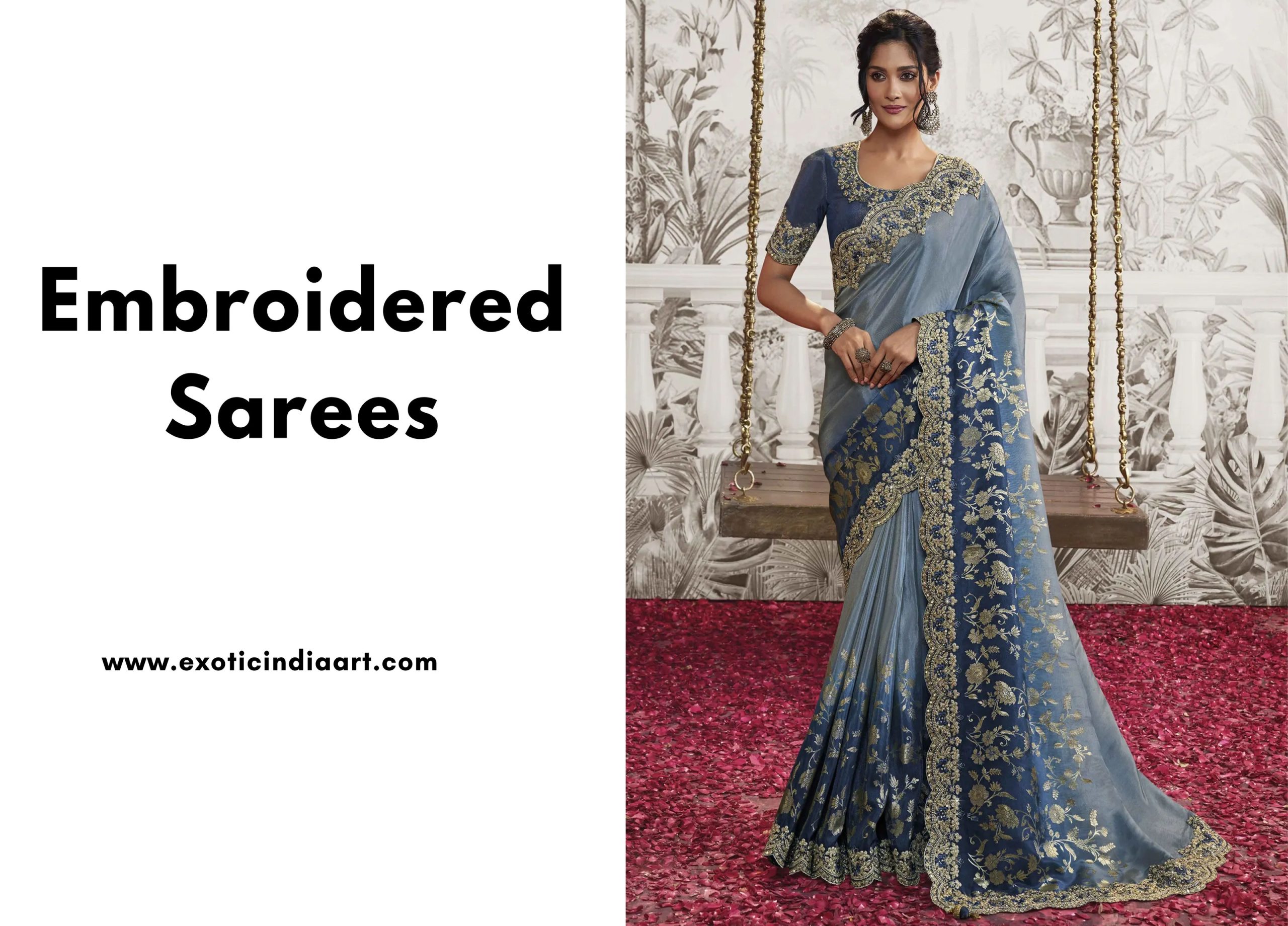Sarees have always been the perfect symbol of Indian fashion. From being worn in daily life by the common women folk of India to being draped by celebrities for International events, sarees are the most versatile garments. This is because they are available in a diverse range of options, from the subtlest printed ones for daily wear to the beautiful embroidered sarees for special events.
Sarees are one of the most embroidered garments in the world and embroidered sarees are a huge favorite among lovers of sarees. Different types of embroideries are done on sarees like Chikankari, Kantha, Zardozi, etc. The fabric plays a major role in selecting the technique of embroidery. For instance, sarees with delicate fabrics like pure silk and pure chiffon are not subjected to machine embroidery because that can harm the fabric.
Phulkari – It hails from Punjab and it involves creating flowers on the saree. Colorful threads are used to embroider floral patterns on the fabric. Hence the name Phulkari is given to this type of embroidery. Sometimes even geometric shapes are also created while doing Phulkari on sarees. The fabric of the saree is reversed and embroidered with a darning stitch using a floss silk thread.
Kathiawari – It hails from the Kathiawar region of Gujarat. This type of embroidery is done by creating bold stitches in bright colors. The artisans put in a lot of patience and focus while practicing this art of embroidery. This technique is used to create heavy embroidery sarees that are beautiful to look at and add grace to the personality of the person who drapes them.
Kasuti – This technique comes from Karnataka. The embroidery is done without knots and with a single thread. The embroidered sarees look identical on both sides because of this. It involves up to 5000 hand stitches which are used to create motifs of conch shells, lamps, elephants, and peacocks on the saree. It was practiced in Mysore by women courtiers from the reign of Chalukyas.
Sujani – This type of embroidery hails from the Bihar region. As the first step, the designs are traced on the fabric. After that, black and brown threads are used to stitch the outline of the motifs created. This is done through a chain stitch. Once this is done, the middle part of the design is filled in by using colorful threads. This is embroidered in a running stitch.
Zardozi – This is a type of Zari work and involves very fine and intricate detailing. The design involves floral motifs and animal figures. Designs are first traced then holes are made in them. Gold and silver bound threads and discs are then stitched on the fabric. Semi-precious stones are also used sometimes. Zardozi is used to craft heavy embroidery sarees that are usually worn at special events.
Kantha – It comes from West Bengal and involves the use of running stitches with tiny gaps to create motifs of flora, fauna, and human figures. The saree gets a wrinkled effect because of this type of stitching technique. Initially, it was done only on dhotis and quilts and was used to create new clothes from old rags. But now it is also used to create beautiful embroidered sarees.
Kutch – This embroidery hails from the Kutch region of Gujarat and it arrived in India with immigrants of the 17th century. It involves using brightly colored threads and mirrors to create patterns on the fabric of the saree. A wide variety of stitching techniques like the running stitch, double buttonhole stitch, etc are used in the Kutch embroidery.
Chikankari – This embroidery has its roots in Lucknow. Its trademark quality is using white threads on colored thin fabrics like cotton, georgette, chiffon, etc but nowadays it is being done in multi-colored threads too. Almost 35 different types of stitches are used in Chikankari like the herringbone stitch, satin stitch, buttonhole stitch, back stitch, stem stitch, etc.
Wrapping Up –
Out of the many arts that India is known for, embroidery is the most famous. It is done in various techniques and can be done with machines and with hands both. However, it is hand embroidery that is the most well-known.
Embroidered sarees of India are popular all over the world. Different techniques from different parts of the country are used to create beautiful sarees and each of them is beautiful in its way.
FAQs
Where is the most demand for hand embroidery designs?
Fashion-forward cities like Paris, Milan, New York, and London usually have the most demand for hand embroidery designs.
Where can I buy a designer embroidery saree online?
The website of Exotic India Art is where you can buy beautiful designer embroidery sarees online.
Which type of jewelry is suitable for embroidery sarees? Minimal and understated jewelry is suitable for embroidery sarees.


